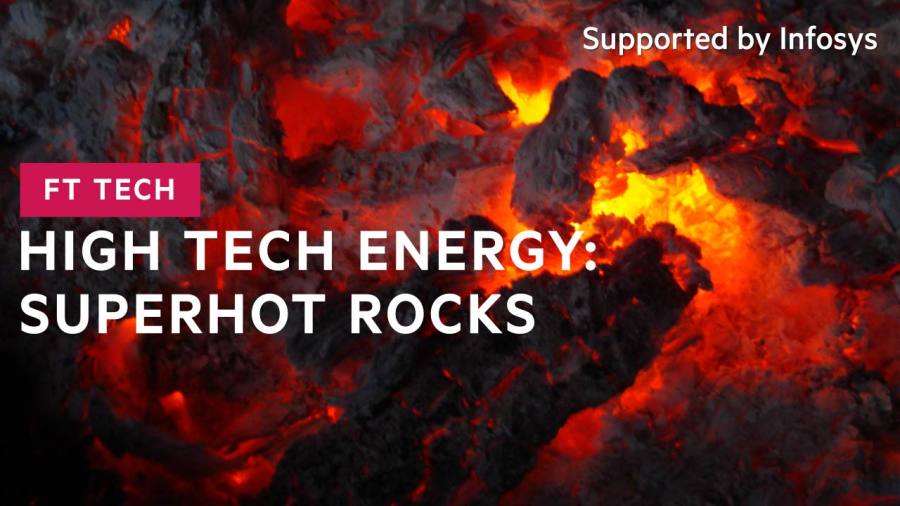
You can enable subtitles (captions) in the video player
It may sound like an ’80s tribute band, but superhot rock energy is all about tapping into the extreme heat emanating from the earth’s core. If it can be developed at scale it could hold the key to providing abundant clean electricity and become a key weapon in the battle against climate change.
The US government wants to help commercialise superhot rock technology by cutting its costs by 90 per cent by 2035, as part of Joe Biden’s pledge to hit net-zero by 2050. Geothermal energy drives generator turbines without burning fossil fuels. Conventional projects rely on water heated by the earth’s core rising through fissures and fractures in permeable rock and using the resulting reservoirs of pressurised hot water. But these only tend to occur in areas of tectonic activity.
Enhanced geothermal systems, on the other hand, allow engineers to drill down into solid rock almost anywhere, injecting water at high pressure and allowing that water to pass through the rock and back up to the surface through another well. It seeks to tap into the deepest and hottest rock possible, close to the earth’s core.
At super-high heat, the performance of geothermal energy takes a dramatic leap. A project using water at 200 degrees has a five megawatt capacity, while a superhot rock project using 400 degree water would result in a 50 megawatt capacity. Turning up the heat by 42 per cent results in 10 times more power, paving the way for cheaper zero emission electricity. And unlike wind and solar, super hot rock can provide energy 24/7 hours a day, 365 days a year from anywhere in the world, if engineers can get to it.
One idea being trialled is melting rock with laser beams. Production of super hot rock isn’t up and running but exploration is ongoing. The world’s first demonstration site is being run by a company called AltaRock in Oregon. Still, this burgeoning new technology requires money research and the resolution of technical challenges.
But if Washington can encourage the billions of dollars of investment that superhot rock energy development requires, it could enjoy top billing along with the more established acts of the renewable energy line-up in the decades ahead.